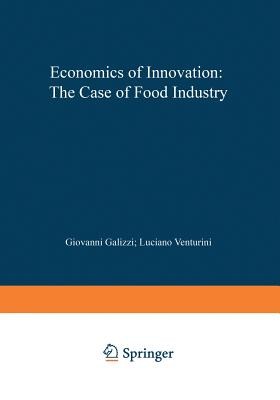
- We will send in 10–14 business days.
- Publisher: Physica Verlag
- Year: 1996
- Pages: 406
- ISBN-10: 379080911X
- ISBN-13: 9783790809114
- Format: 17.8 x 25.4 x 2.2 cm, minkšti viršeliai
- Language: English
- SAVE -10% with code: EXTRA
Economics of Innovation: The Case of Food Industry (e-book) (used book) | bookbook.eu
Reviews
Description
Giovanni Galizzi and Luciano Venturini The food industry has been characterized by several and profound changes in its structure and competitive environment in the last decades. Although it is not a research-oriented industry, there is no arguing that technological change and particularly product innovations are crucial determinants of ftrms' performance and In recent years food manufacturers have accelerated the consumers' welfare. development of new products, by using new ingredients, processing and packaging techniques. Thus, food markets are increasingly characterized by competitive environments where relevant flows of innovative products, quality improvements and new technologies provide new consumption trends, food habits, market opportunities and ftrms' strategies. However, the issue of product innovation in the food industries has been rather neglected by economists. Few works have explicitly addressed this issue. After the pioneering book of Buzzell and Nourse (1967), one can count few contributes. Connor (1981) examined the empirical determinants of new food products introductions. Padberg and Westgren (1979) provided crucial insights about the nature of food innovation through their notions of consumer inertia, technological redundancy and incremental product innovation. Some case-studies provide useful empirical materials, but they are generally sparse.
EXTRA 10 % discount with code: EXTRA
The promotion ends in 22d.06:34:01
The discount code is valid when purchasing from 10 €. Discounts do not stack.
- Publisher: Physica Verlag
- Year: 1996
- Pages: 406
- ISBN-10: 379080911X
- ISBN-13: 9783790809114
- Format: 17.8 x 25.4 x 2.2 cm, minkšti viršeliai
- Language: English English
Giovanni Galizzi and Luciano Venturini The food industry has been characterized by several and profound changes in its structure and competitive environment in the last decades. Although it is not a research-oriented industry, there is no arguing that technological change and particularly product innovations are crucial determinants of ftrms' performance and In recent years food manufacturers have accelerated the consumers' welfare. development of new products, by using new ingredients, processing and packaging techniques. Thus, food markets are increasingly characterized by competitive environments where relevant flows of innovative products, quality improvements and new technologies provide new consumption trends, food habits, market opportunities and ftrms' strategies. However, the issue of product innovation in the food industries has been rather neglected by economists. Few works have explicitly addressed this issue. After the pioneering book of Buzzell and Nourse (1967), one can count few contributes. Connor (1981) examined the empirical determinants of new food products introductions. Padberg and Westgren (1979) provided crucial insights about the nature of food innovation through their notions of consumer inertia, technological redundancy and incremental product innovation. Some case-studies provide useful empirical materials, but they are generally sparse.


Reviews